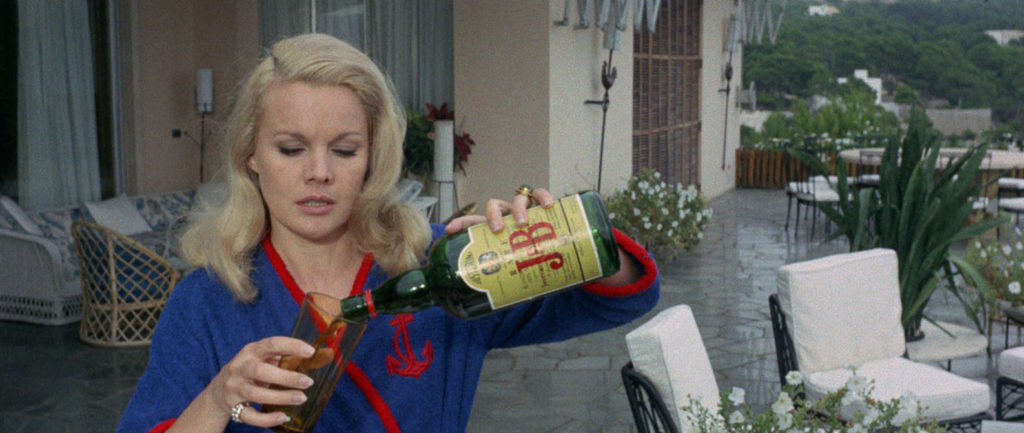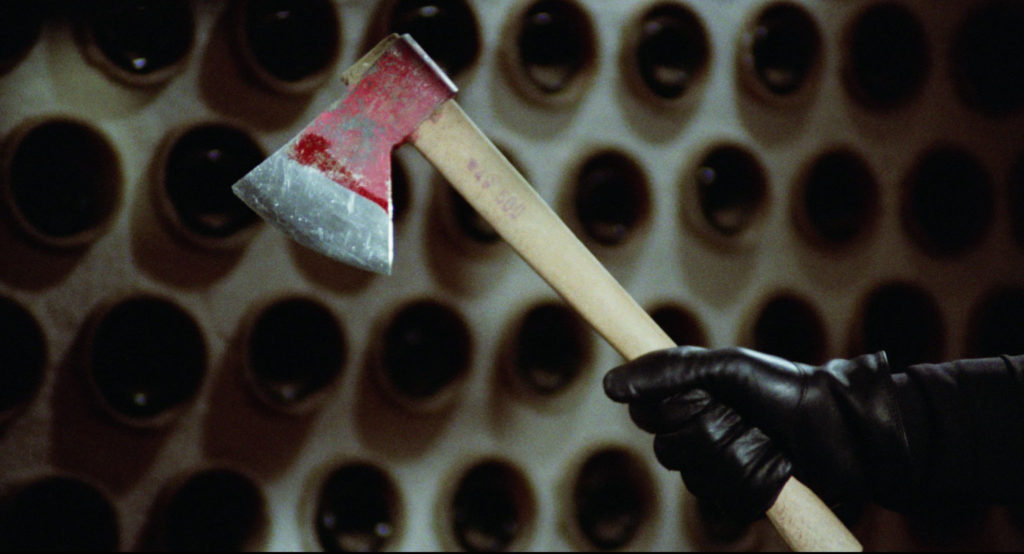
Well, I didn’t mean to leave this site gathering cobwebs for a few weeks (although cobwebs are always a good look), so as I get caught up from a summer vacation, forgive this rambling, scattershot post. I’ll get back to full-length reviews next week, promise.
What have I been doing? Buying and watching movies. During our pandemic spring and summer, boutique labels such as Vinegar Syndrome, Severin, Kino, Mondo Macabro and others have been running sales and exclusive/limited edition releases, offering physical media fans a chance to bury themselves in cult cinema, and possibly bankrupt themselves. As I write this, the semi-annual Barnes & Noble half-off sale on the Criterion Collection is underway, which is why the new Bruce Lee box set is staring down at me right now. “You already have most of my movies,” the ghost of Bruce Lee is scowling. “Is it just because it’s a really nice box? Is that why?”
I’m still a big proponent of physical media, even as streaming services keep launching and people keep subscribing. Though Blu-ray sales have been in rapid decline, I suspect it will endure on some level in the same way that vinyl has remained popular following its unexpected comeback. And the upside of the major studios’ faded interest in the physical format is that more licensing opportunities have opened up for the boutiques, at least from some of those studios (when it comes to the physical release of catalog titles, the full impact of Disney’s acquisition of Fox remains to be seen, but it’s a cause of concern given Disney’s track record). Criterion’s ability to include Enter the Dragon with its Bruce Lee box set (including the rare theatrical version) is something of an achievement, as Shout couldn’t manage it a few years ago with the Lee titles in their Shout Select line. But Shout also has a new victory: by a miraculous alignment of planets, the full Friday the 13th franchise – spanning both Paramount and New Line’s history with the series, including the 2009 reboot – has just been announced in a lavish box set. This includes Part III in real 3-D (not red/blue anaglyph) – even though 3-D televisions ceased production years ago, a fact that hasn’t stopped some labels. (The fabulous 3-D Film Archive continues to work on restorations of often deeply obscure titles for Blu-ray.) As a collector, these are the best of times, these are the worst of times.
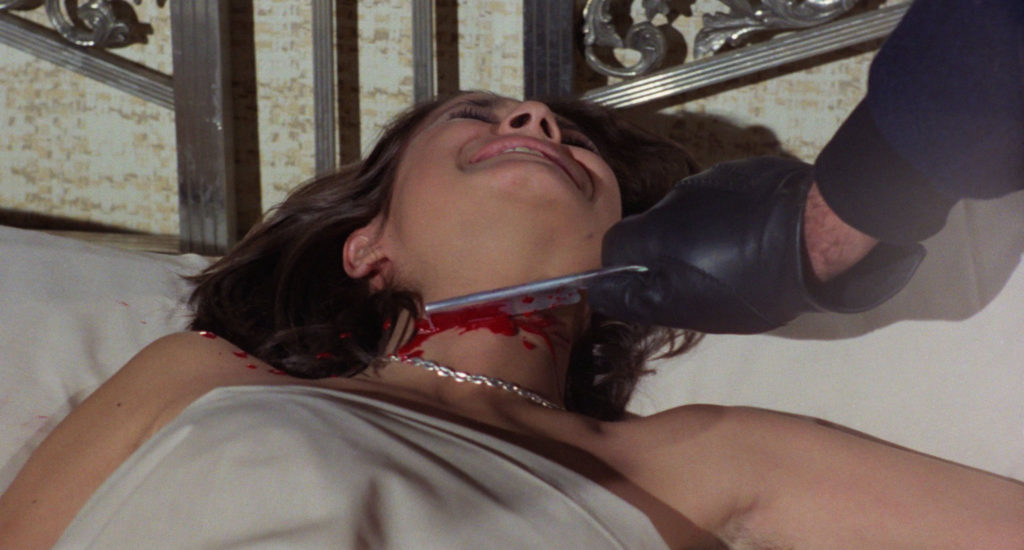
A killing in “Trauma”
Anyway, the discs have been flowing in such that I really need to get ahold of the influx and start working through the pile. That’s underway, and it mostly involves watching a lot of giallo, the pulp-inspired genre of black-gloved killers, tangled plots, outrageous fashions, and (sometimes, not always) J&B whisky. Vinegar Syndrome’s recent Forgotten Gialli: Volume One box set includes two Spanish gialli and one Italian, all of them far out of the cult “mainstream.” The highlight of these is Trauma (1978), from León Klimovsky, the prolific Spanish director perhaps best known for his collaborations with Paul Naschy. This is a bizarrely compelling erotic thriller templated pretty rigidly as a gender-flipped Psycho, with a writer (Heinrich Starhemberg) fleeing a strained marriage to take an extended stay at a secluded inn run by a woman (Ágata Lys) who seems peculiarly averse to taking in guests, or at least those who don’t abide by her strict moral guidelines. She frequently runs upstairs to have heated arguments with her husband, who is too sick to come downstairs and meet the guests, and always kept off-screen. Killings ensue. Despite the strange casting of charisma void Starhemberg – who disrobes for a sex scene that no one asked for – this is the kind of trashy entertainment that we want from a giallo programmer.
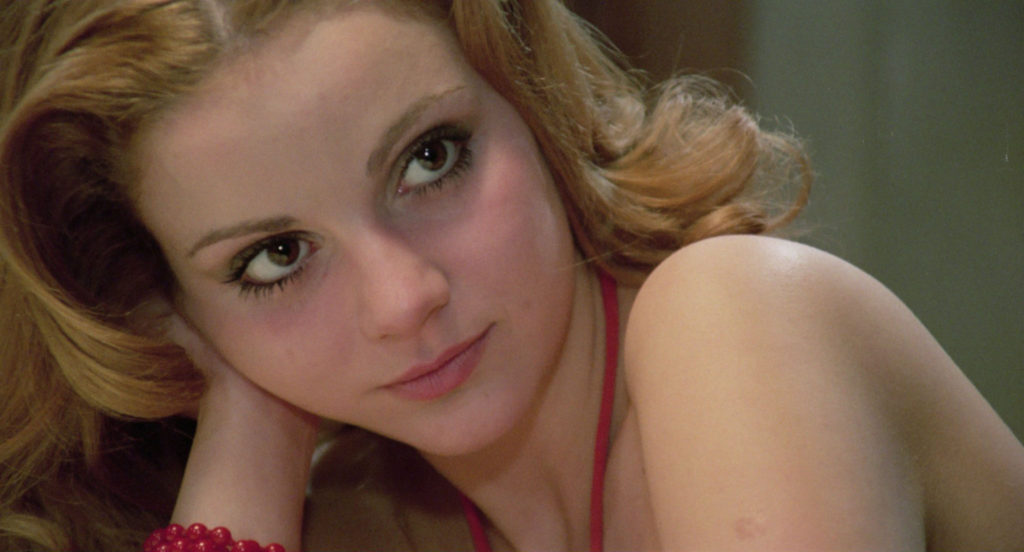
“The Police are Blundering in the Dark”
The Spanish Agatha Christie riff The Killer is One of 13 (1973) has a straightforward murder-mystery setup, with guests summoned to a remote manor because the host thinks one of them killed her husband. But the film is humorously padded with so much dialogue and exposition that by the time the guests start getting terrorized, the viewer may have tuned out entirely. A last-second twist makes no sense at all, though that’s not really out of character for a giallo. Finally, The Police are Blundering in the Dark (1978) may be the only Italian film in the bunch, but it’s also incompetently made (by Helia Colombo, who had never before made a film, and never would again), with characters and plot threads that come from nowhere and go nowhere, as if the narrator is from Drunk History. The most notable aspect is its left-field, third act plunge into science fiction. Though the films are really just curiosities of variable quality, the production of the set is first rate (the sturdy box opens to reveal a razor slashing it in half), and the special features allow for a greater appreciation of the history of the films, with audio commentaries and supplements by a reliable gathering of giallo experts: Kat Ellinger, Troy Howarth, and Rachael Nisbet.
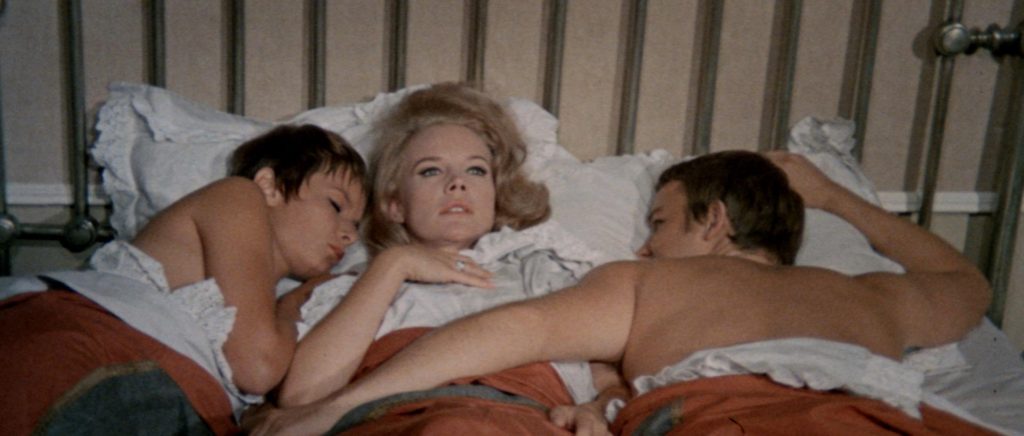
Carroll Baker suddenly remembers the night before in “Orgasmo.”
I’m only halfway through Severin’s new four-film, two-CD box set The Complete Lenzi/Baker Giallo Collection, which includes the collaborations between director Umberto Lenzi and former Hollywood sex symbol Carroll Baker (Baby Doll) – but this is a wonderful journey so far. Orgasmo (aka Paranoia, 1969) is a delirious, whisky-drenched psychosexual thriller with the wealthy widow Kathryn (Baker) first aroused by, then held captive by two beautiful young people who may or may not be siblings (Lou Castel and Colette Descombes). The X-rated cut is included, though this is nothing more serious than a few extended bits of nudity from the fearless Baker. Be prepared for some stunning hallucinogenic moments with searing colors and close-ups of toy dolls and bare breasts, whiplash-inducing zooms, a hysteria-induced tumble down the stairs, third act makeup on Baker that has her looking like one of Romero’s living dead, and a big twist that arrives with amazing abruptness and violence. It’s all accompanied by a delightful commentary track by author Alexandra Heller-Nicholas which I can’t recommend more strongly. Last night I watched the next film in the set, So Sweet…So Perverse (1969) – like Orgasmo, a French co-production – which casts Jean-Louis Trintignant as a bored Parisian businessman who becomes involved with the woman in the apartment below (Baker) and her abusive husband. Unexpectedly, the film moves sharply into Les Diaboliques territory. Again – highly entertaining trash, and I look forward to the next two films in the set (A Quiet Place to Kill and Knife of Ice) after I make a run to the store for some whisky.
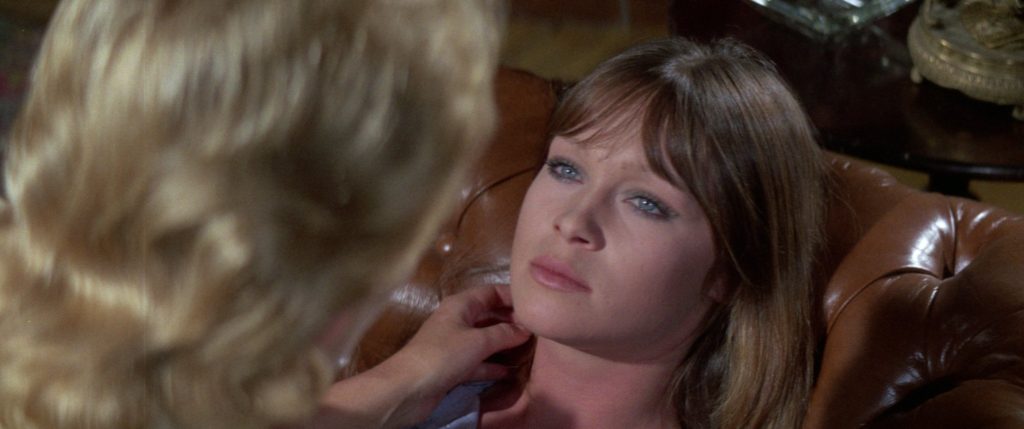
Jean Seberg (left) and Marisol in “The Corruption of Chris Miller.”
Severin also recently released The Strange Vice of Mrs. Wardh (1971), a classic of the genre from director Sergio Martino (All the Colors of the Dark) and his muse, gorgeous Edwige Fenech. A serial killer is on the loose, and the culprit may be someone in Fenech’s highbrow social circle – possibly the man with whom she’s having an affair. Stylish as hell, with a fantastic twist halfway through the film and a final scene that’s truly memorable. Finally, I caught up with Vinegar Syndrome’s release of The Corruption of Chris Miller (1973), a Spanish thriller with a distinguished pedigree: internationally acclaimed director Juan Antonio Bardem (Death of a Cyclist) and stars Jean Seberg (Breathless) and Marisol, a former child actress and pop star effectively remaking her image. As with Orgasmo, the plot involves a kind of home invasion with a wealthy secluded woman – Seberg – as the object of attention for a lustful young man (Barry Stokes, later to appear in Norman J. Warren’s similarly plotted science fiction horror Prey). Both Seberg and Marisol are trapped in a rural limbo in the extended absence of Marisol’s father, Seberg’s former lover. Incestuous overtones, a lust triangle, and a late-arriving serial killer twist – including a genuinely chilling, rain-soaked slaughter – make this a potboiler worth checking out. With whisky. Always whisky.
